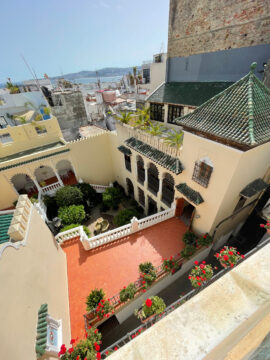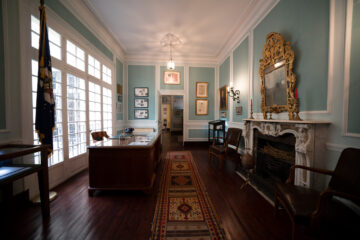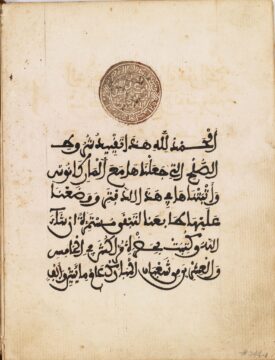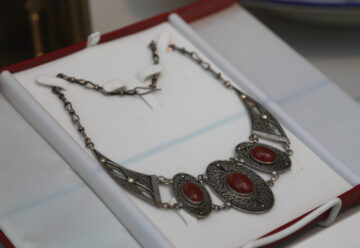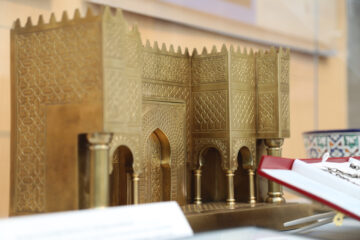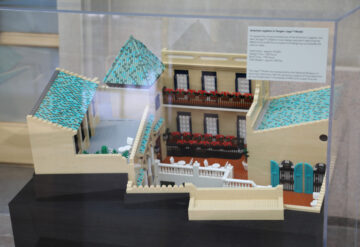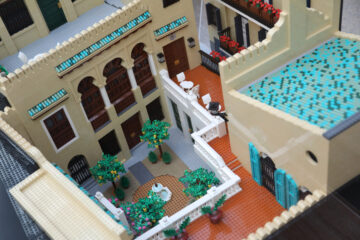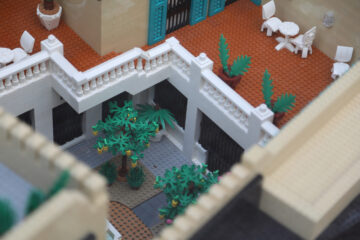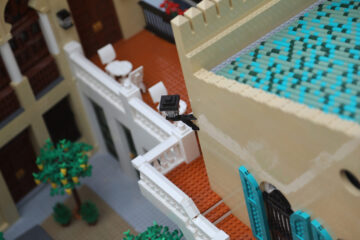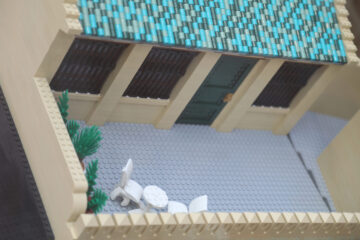
Tangier Old Legation: America’s First Diplomatic Property

The Tangier American Legation is a symbol of cultural exchange
between the Kingdom of Morocco and the United States. The
Legation’s presence in the Medina attests to bilateral ties formed
during the American Revolution and affirmed by the Treaty of
Friendship (1786). Gifted to the U.S. in 1821, the Legation property
was integral to the coalition forging the Cape Spartel Lighthouse
Treaty, a precedent for the League of Nations, and again during
WWII Operation Torch.
The U.S. diplomatic corps worked from the Legation for 140 years.
The building’s additive construction mirrored the growth of the American delegation, bridging a narrow street and expanding
around a courtyard of neo-Moorish design.
The Legation is the only U.S. National Historic Landmark in a
foreign country. It is also recognized on the National Register of
Historic Places (1981) and one of the first inscribed on the
Secretary of State’s Register of Culturally Significant Property
(2001).
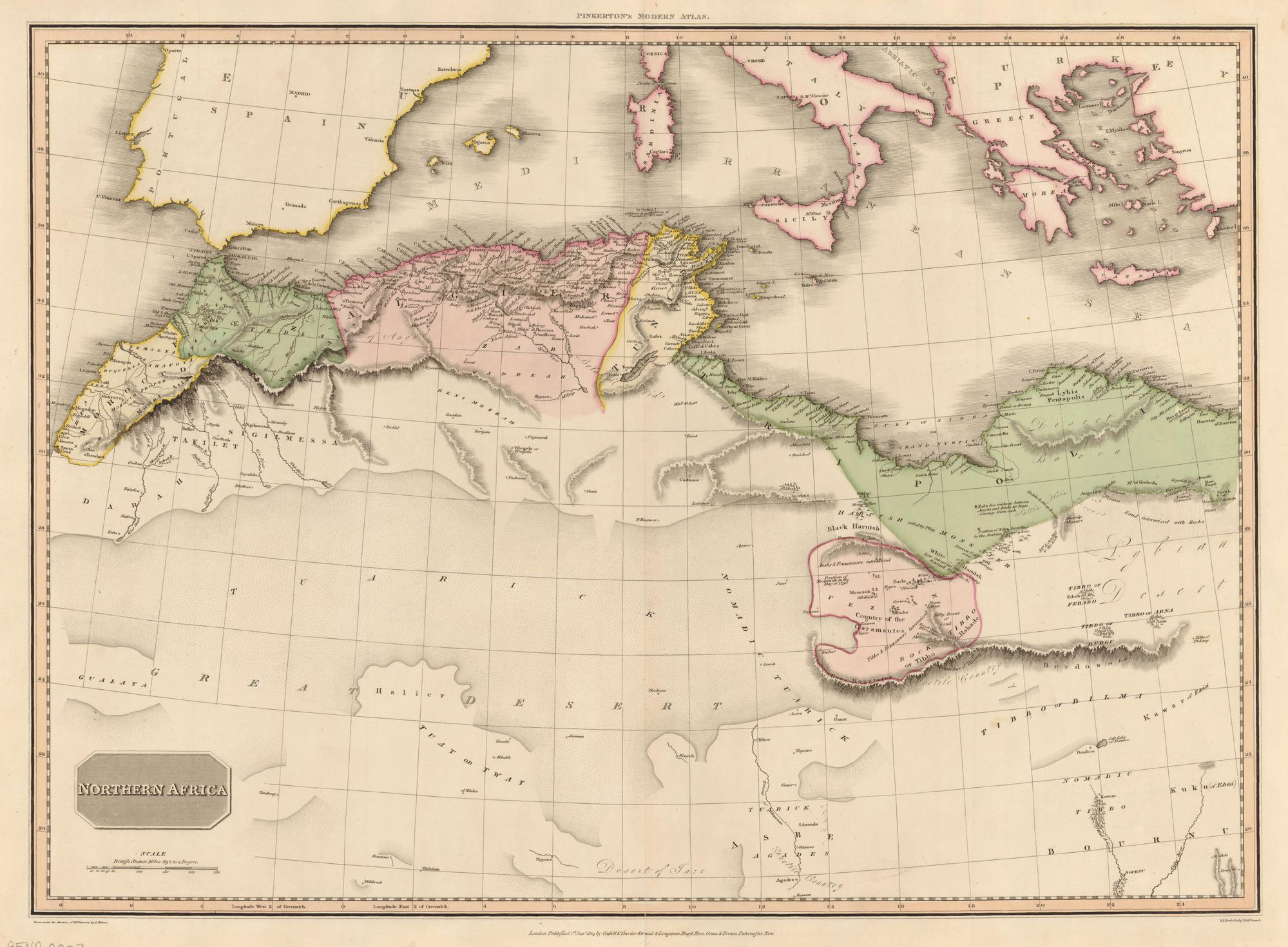
U.S.-Morocco Relations
The United States and Morocco have a long and special
relationship. Did you know the Treaty of Peace and Friendship
between the two countries has remained unbroken since its
signing in 1786?
Morocco was the first country in the world to recognize the United
States as an independent nation in 1777. The Sultan sought a
trade alliance but did not get a response from the United States
government until after the Revolutionary War, when a Moroccan
corsair captured an American ship to use as leverage for a treaty.
The 1786 treaty established both diplomatic and trade relations.
In the 1780s and 1790s, other Barbary nations continued to
capture American ships and citizens. Despite these tensions, the
U.S. – Moroccan alliance endured, underscoring the need for a
physical U.S. diplomatic presence to strengthen relations. Sultan
Mohammed ben Abdallah gifted the Tangier Legation building to
the United States in 1821.
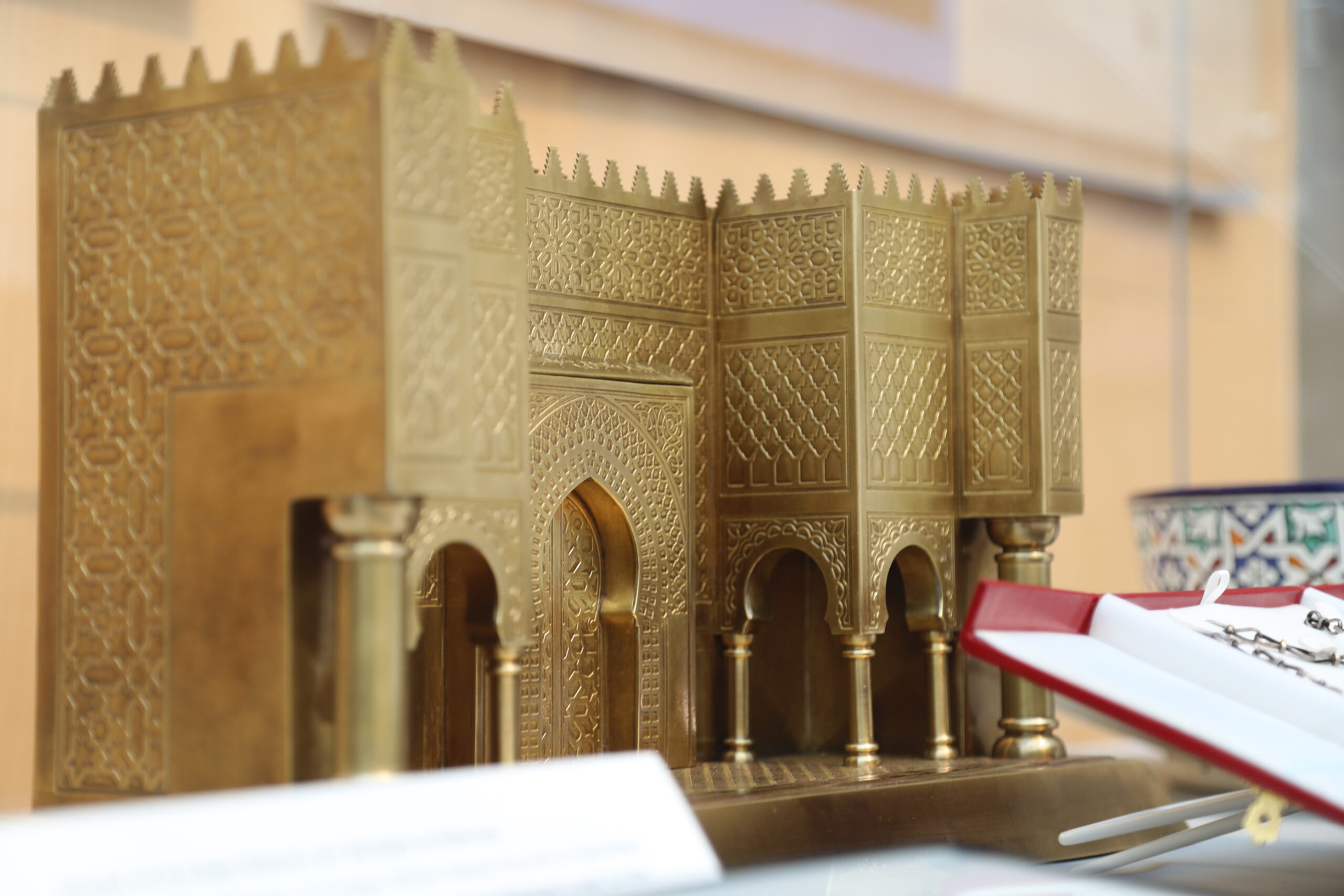
Diplomatic Protocol and the Practice of Gift Exchange
Careful protocol paves the way to successful diplomacy. Protocol provides an agreed-upon set of rules for interactions between officials representing their governments to ensure that diplomatic relationships work smoothly.
As part of that process, the exchange of gifts has a long history as a ceremonial tradition in the formal practice of diplomacy. The diplomatic gifts displayed here from the Kingdom of Morocco reveal a diversity of materials and cultural symbols and serve as a testament to one of our nation’s longest-standing bilateral relationships, dating back to 1786.
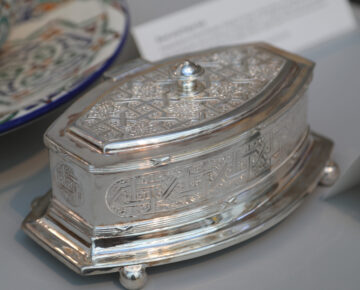
Silver Plated Box. Presented by Minister of Foreign Affairs Mohamed Benaissa of Morocco to Secretary of State Condoleezza Rice on May 2, 2006. Transfer from the Office of the Chief of Protocol (2008.0007.003)
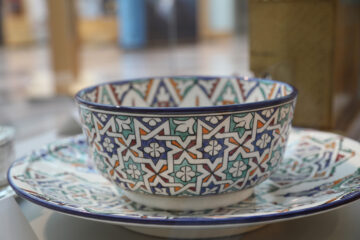
Bowl and Plate Set. Presented by Prime Minister Abbas El-Fassi to Secretary of State Condoleezza Rice during her visit to Morocco, September 6-7, 2008. While there, Secretary Rice also met with Minister of Foreign Affairs Taieb Fassi Fihri and other senior officials. Transfer from the Office of the Chief of Protocol (2009.0003.04)

American Legation in Tangier – LEGO™ Model
To capture the unique architecture of the American Legation, the team at LEGO™ utilized a novel design approach, capturing the details from inside the courtyard and designing out towards the exterior walls.
Total bricks – approx. 45,000
Design Time – 100 Hours
Build Time – 195 Hours
Total Weight – approx. 500 lbs
The LEGO™ Model was transported to the National Museum of American Diplomacy with the generous support of the Foundation for Art and Preservation in Embassies (FAPE) and Crozier Fine Art.
This exhibit was completed in partnership with the U.S. Department of State’s Office of Cultural Heritage under the Bureau of Overseas Buildings Operations.
About the Spotlight
Throughout the year, the National Museum of American Diplomacy (NMAD) highlights different stories and artifacts of diplomacy through our rotating exhibit: Spotlight on Diplomacy.
This exhibit was temporarily on display at the 21st Street NW entrance of the Harry S Truman Building. To allow more of the public to view these stories during the pandemic, this exhibit is also available here on our website for virtual viewing.
